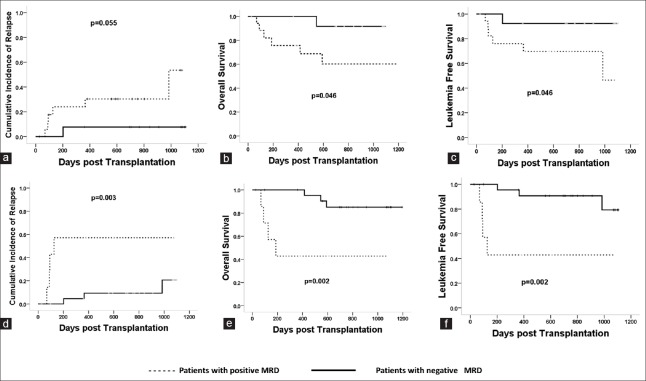Figure 1.
The impact of MRD postchemotherapy on clinical outcomes in MSDT. Patients with positive MRD after the first chemotherapy had higher CIR (32.3 ± 9.7% vs. 7.7 ± 3.1%, P = 0.055, χ2 = 3.661) (a), lower LFS (67.7 ± 6.1% vs. 92.3 ± 9.8%, P = 0.046, χ2 = 3.680) (b), and OS (67.7 ± 6.1% vs. 92.3 ± 9.8%, P = 0.046, χ2 = 3.680) (c) than those without MRD. Patients with positive MRD after the second chemotherapy had higher CIR (57.1 ± 3.6% vs. 12.5 ± 2.7%, P = 0.003, χ2 = 8.759) (d), lower LFS (42.9 ± 6.3% vs. 87.5 ± 8.7%, P = 0.002, χ2 = 9.803) (e), and OS (42.9 ± 6.3% vs. 87.5 ± 8.7%, P = 0.002, χ2 = 9.803) (f) than those without MRD. MRD: Minimal residual disease; MSDT: Matched sibling donor transplantation; CIR: Cumulative incidence of relapse; LFS: Leukemia-free survival; OS: Overall survival.

